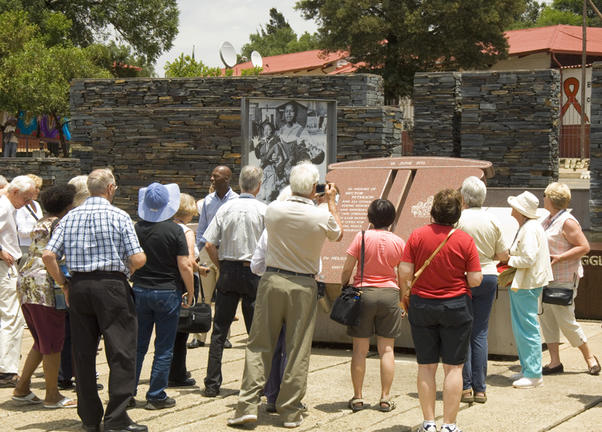The Soweto Townships are at the centre of South African culture and music. SOWETO, acronym for South Western Township, is home to over 2 million people, who, despite living in crowded and chaotic conditions, have a tangible sense of community, one which ironically, the ordered, walled northern suburbs lack.



Located to the south west of the “City of Gold”, Soweto remembers the hardships and struggles of many individuals during the decades of Apartheid. It was home to two highly praised activists Desmond Tutu and Nelson Mandela, whose house still stands as a museum. The 1970s brought more turmoil when student protests clashed with the Apartheid police, the tragedy that followed is remembered in the Hector Peterson Museum and honored as a national holiday on 16th June, Youth Day.
We also discover the history behind the Regina Mundi Church, the site of many secret underground meetings and the Chris Hani Baragwanath Hospital, named after another iconic freedom fighter who tragically lost his life towards the end of the struggle. Joy and celebration was felt as the FIFA World Cup finally made its way to the continent in 2010, with Soweto hosting the final in what is now Africa`s largest stadium,”The Calabash”.
Soweto is unlike a suburb you’ve ever seen or been to, yet the history of struggle encapsulated here is a cornerstone of the South African story. This is the place to gain a true understanding of one of the most important communities within South Africa. This area lends much of the nations culture and music and is a great opportunity to experience some real culture.
Duration: 4-5 hours
Languages: English
Group Size: 1/8 (min/max)
Departures: Johanesburg, Sandton, Rosebank and surronds
Departure Time: 08:30am or 1:30pm
Returns: Johanesburg, Sandton, Rosebank and surronds
Return Time: 1pm 0r 6pm
2019/2020 Rates:
1 adult @ R 2 200 pp
2-4 adults @ R 1 100 pp
5-8 adults @ R 800 pp
For larger groups, please enquire for special prices.
Rate – children under 12 years R 400 pp.
Excludes:
Mandela House Museum



